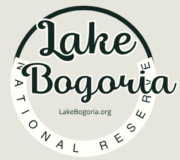Lake Bogoria National Park is one of Kenya’s most extraordinary protected areas, not just for its dramatic landscapes and flamingo-filled shores, but also for its rich historical, cultural, and geological significance. This guide explores the layered story of Lake Bogoria—from ancient human habitation and colonial encounters to the creation of the national park and the struggle for indigenous rights.
Early History and Indigenous Connection
Long before it was a national park, Lake Bogoria was home to the Endorois people, a Cushitic-speaking pastoralist community that lived in harmony with the land. The Endorois viewed the lake and its surrounding features—hot springs, hills, and valleys—as sacred. Their traditional lifestyle included grazing livestock, practicing herbal medicine, and performing rituals tied to natural landmarks.
The region’s historical significance is also supported by archaeological evidence, including stone tools, pottery fragments, and ancient settlement sites, suggesting that early humans occupied the Rift Valley area around Lake Bogoria for thousands of years.
Colonial Exploration and Renaming
In the 1880s, British explorer and missionary Bishop James Hannington visited the region. In line with colonial practices of the time, the lake was briefly renamed Lake Hannington in his honor. However, local resistance to colonial names and the resurgence of indigenous identity eventually led to the lake being re-identified by its original name—Lake Bogoria, derived from the local language.
Gazettement and the Creation of Lake Bogoria National Park
Lake Bogoria National Reserve was first gazetted in 1973 by the Kenyan government, recognizing its ecological importance, especially as a critical flamingo habitat and geothermal area. In 1983, it was elevated to Lake Bogoria National Park, a move intended to boost conservation and tourism.
The gazettement, while positive for biodiversity protection, came at a cost. The Endorois community was displaced without consultation or compensation, losing access to ancestral land and sacred sites.
This led to a decades-long legal struggle that culminated in a historic 2010 ruling by the African Commission on Human and Peoples’ Rights, which found that the Kenyan government had violated the rights of the Endorois. The ruling recommended restitution, compensation, and protection of their cultural heritage.
Lake Bogoria as a UNESCO World Heritage Site
In 2011, Lake Bogoria was inscribed as part of the Kenya Lake System in the Great Rift Valley, a UNESCO World Heritage Site. This designation—shared with Lake Nakuru and Lake Elementaita—recognized its outstanding universal value for birdlife, especially as a key stopover and feeding site for millions of lesser flamingos.
Lake Bogoria is now globally recognized not only for its biodiversity, but also for its importance in geological and ecological research.
Archaeological and Historical Landmarks
Though not widely developed for tourism, Lake Bogoria’s surroundings include fascinating archaeological and cultural landmarks:
- Rock engravings and ancient tools hint at early human presence in the area.
- Traditional shrines and prayer sites used by the Endorois remain spiritually significant.
- Kapkuikui Village offers cultural experiences that highlight traditional ways of life.
- Colonial-era trails and abandoned mission sites offer subtle reminders of historical change.
Oral Traditions, Myths, and Legends
Lake Bogoria is steeped in oral history and folklore, especially from the Endorois. According to legend, the lake is protected by ancestral spirits, and unusual natural occurrences—such as sudden geyser eruptions—are said to be spiritual warnings or signs. Visitors are often cautioned to behave respectfully near sacred sites.
These stories are more than myths—they reflect deep cultural relationships with the land and a traditional ecological knowledge passed down for generations.
Cultural Heritage and Modern Restoration Efforts
Today, the cultural restoration of the Endorois people is an ongoing journey. With legal victories now paving the way, the community is increasingly involved in eco-cultural tourism, sharing their history, rituals, music, and knowledge with visitors.
Projects aim to promote community-based conservation, ensuring that the benefits of tourism and preservation also uplift the very people who protected these lands for centuries.
Preserving Lake Bogoria’s Cultural Heritage
The cultural heritage of Lake Bogoria is intimately tied to the Endorois people, an indigenous community that traditionally inhabited the area. For generations, they maintained a spiritual and cultural connection to the lake, viewing it as sacred. However, the establishment of the national park in the 1970s led to the displacement of the Endorois. In a landmark 2010 ruling by the African Commission on Human and Peoples’ Rights, the Kenyan government was instructed to restore their land rights and respect their cultural heritage. Since then, efforts have been made to support cultural preservation and allow sustainable community involvement in tourism and conservation.
Historical Landmarks to Explore Near Lake Bogoria
While Lake Bogoria is primarily known for its natural features, visitors can also find several culturally and historically significant landmarks:
- Kapkuikui Village: A cultural site offering insights into traditional Endorois life.
- Endorois shrines and sacred sites: These include prayer hills and natural features historically used for spiritual practices.
- Colonial-era missions and trails: Though not formally preserved, remnants of early colonial exploration can be found in parts of Baringo County.
Conclusion: A Living Landscape of Memory and Meaning
Lake Bogoria National Park is far more than a scenic destination—it is a living landscape where history, culture, and nature converge. From ancient human roots and colonial disruption to ecological triumph and indigenous resurgence, the park’s story is both inspiring and complex.
To truly experience Lake Bogoria is to understand not only its natural wonders, but also the people, stories, and struggles that have shaped this extraordinary place.
